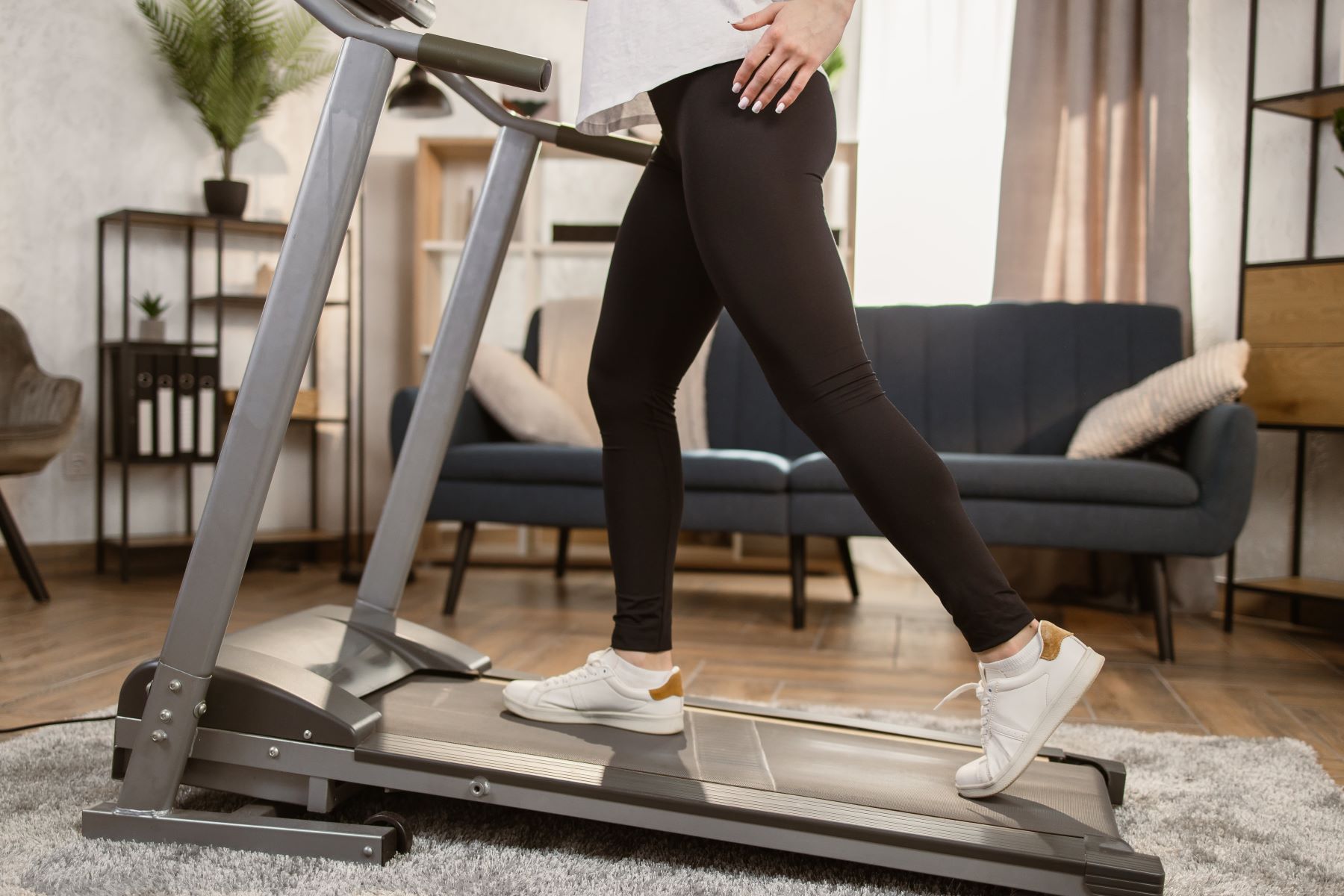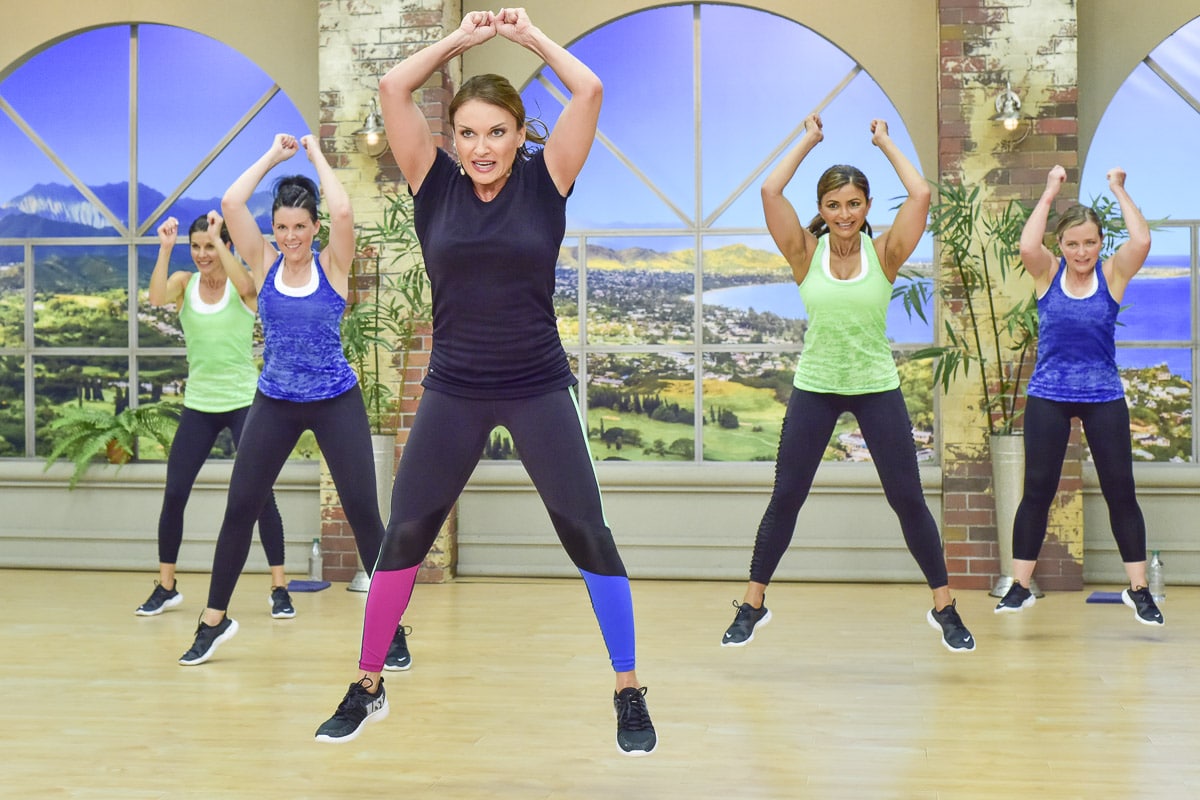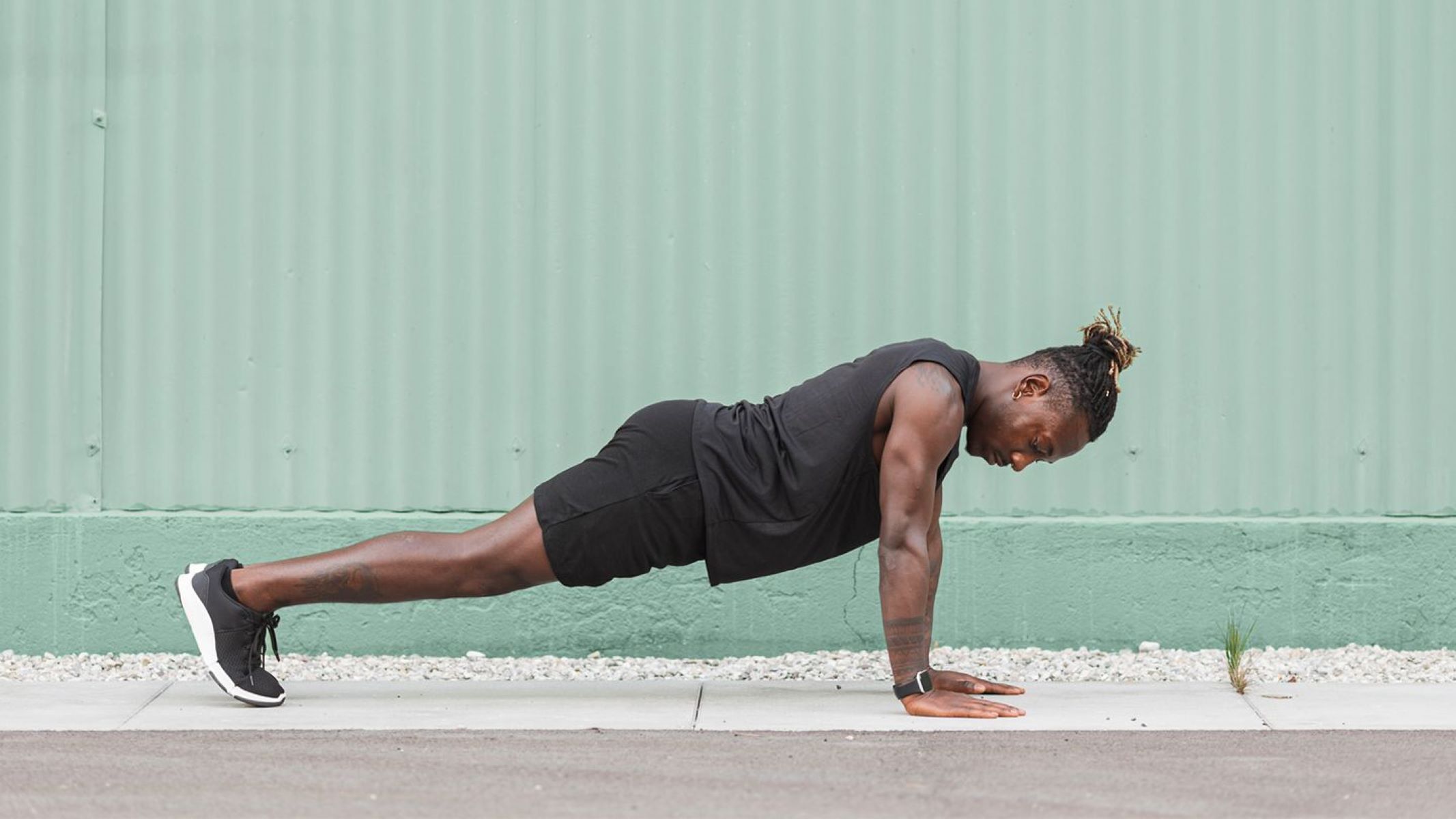

Featured
What Is A Cardio Workout
Modified: January 2, 2024
Learn what a cardio workout is and how it can benefit your overall health and fitness. Get featured workouts and tips to improve your cardiovascular endurance.
Introduction
When it comes to achieving optimal fitness and maintaining a healthy lifestyle, incorporating cardio workouts into your routine is essential. Cardiovascular exercises, also known as cardio workouts, are activities that raise your heart rate and increase your breathing rate. These workouts have numerous benefits for both your physical and mental health.
Whether you’re a beginner looking to get started or an experienced fitness enthusiast looking for new ways to challenge yourself, understanding the importance and benefits of cardio workouts is crucial. In this article, we will explore what cardio workouts are, the benefits they offer, different types of cardio exercises, tips for a successful workout, and how to incorporate cardio into your fitness routine.
Cardio workouts are any form of exercise that increases your heart rate, causing your cardiovascular system to work harder. Common examples include running, cycling, swimming, dancing, and HIIT (High-Intensity Interval Training) workouts. These activities require moderate to vigorous intensity and involve repetitive movements that engage large muscle groups.
The benefits of incorporating cardio workouts into your routine are numerous. First and foremost, cardio exercises contribute to improved cardiovascular health. Regular cardio workouts can increase your heart’s efficiency in pumping blood, strengthen your heart muscles, and lower your blood pressure.
Additionally, cardio workouts help with weight management by burning calories and reducing body fat. Engaging in these exercises regularly can also help increase your metabolism, allowing your body to efficiently burn calories throughout the day.
Beyond the physical benefits, cardio workouts also have positive effects on mental health. Engaging in aerobic exercises promotes the release of endorphins, which are known as the body’s “feel-good” hormones. This can result in reduced stress levels, improved mood, and better sleep patterns.
Now that you understand the importance and benefits of cardio workouts, let’s dive into the various types of cardio exercises you can incorporate into your fitness routine. Whether you prefer high-impact activities or low-impact alternatives, there are plenty of options to suit your preferences and fitness level.
Definition of Cardio Workout
Cardio workout, also known as cardiovascular exercise or aerobic exercise, refers to any physical activity that involves using large muscle groups in a rhythmic and continuous manner. This type of exercise is specifically designed to elevate your heart rate and oxygen consumption for an extended period.
The primary goal of a cardio workout is to improve cardiovascular fitness and endurance. It helps strengthen your heart and lungs, improve circulation, and increase the body’s ability to utilize oxygen efficiently. By engaging in cardio exercises, you challenge your cardiovascular system, promoting its adaptation and enhancing overall cardiovascular health.
Cardio workouts can be performed using various modalities, including but not limited to running, cycling, swimming, rowing, dancing, jumping rope, and aerobic classes. These activities can either be performed indoors or outdoors, depending on your preferences and available resources.
A cardio workout typically involves maintaining a moderate to high intensity level for a sustained period, typically between 20 to 60 minutes. However, the duration and intensity of the workout can vary depending on individual fitness levels, goals, and preferences.
During a cardio workout, the body relies primarily on aerobic energy production, where energy is derived from glucose and fat oxidation. This aerobic energy production process allows for sustained and continuous physical activity without experiencing excessive fatigue or exhaustion.
The intensity of a cardio workout can be measured using various methods, including heart rate monitoring, perceived exertion, and talk test. Heart rate monitoring involves tracking your heart rate during exercise to ensure you’re working within your target heart rate zone, which is usually around 50-85% of your maximum heart rate.
It is important to note that cardio workouts can be customized to fit different fitness levels and individual goals. Beginners may start with lower intensity exercises and gradually increase the duration and intensity as their fitness improves. On the other hand, advanced individuals may engage in high-intensity interval training (HIIT) or incorporate resistance training to add an extra challenge to their cardiovascular workouts.
Now that we have a clear understanding of what a cardio workout entails, let’s explore the numerous benefits it offers for our overall health and well-being.
Benefits of Cardiovascular Exercise
Engaging in regular cardiovascular exercise provides a multitude of benefits for both your physical and mental well-being. Incorporating cardio workouts into your fitness routine can have a transformative impact on your overall health. Here are some key benefits of cardiovascular exercise:
- Improved Heart Health: Cardio workouts strengthen your heart muscles, allowing them to pump blood more efficiently. This leads to lower resting heart rate, reduced risk of heart disease, and improved overall cardiovascular health.
- Enhanced Lung Function: Cardio exercises increase your breathing rate, improving the capacity and efficiency of your lungs. This allows you to take in more oxygen during physical activity, leading to better endurance and stamina.
- Weight Management: Regular cardio workouts help burn calories and contribute to weight loss or weight management. Engaging in activities such as running, cycling, or dancing can help shed excess pounds and maintain a healthy body weight.
- Increased Energy: Cardiovascular exercise boosts your energy levels by increasing blood circulation and improving oxygen flow throughout the body. This results in enhanced productivity, reduced fatigue, and improved overall vitality.
- Stress Relief: Cardio workouts stimulate the release of endorphins, which are natural mood-regulating hormones. Regular exercise helps alleviate stress, anxiety, and symptoms of depression, promoting a more positive and balanced mental state.
- Better Sleep: Engaging in cardiovascular exercise can improve the quality of your sleep. Regular physical activity helps regulate your sleep-wake cycle and promotes restful sleep, leading to increased energy levels and improved cognitive function.
- Reduced Risk of Chronic Diseases: Regular cardio workouts help reduce the risk of chronic diseases such as cardiovascular disease, type 2 diabetes, and certain types of cancer. It also helps manage existing conditions and improves overall longevity.
- Boosted Brain Health: Cardiovascular exercise promotes better cognitive function, memory, and focus. It increases blood flow to the brain, stimulates the growth of new brain cells, and enhances overall brain health.
- Stronger Immune System: Regular exercise, including cardiovascular workouts, enhances the immune system by improving circulation, reducing inflammation, and promoting the production of antibodies. This helps protect against illness and boosts overall immune function.
These are just a few of the many benefits that cardiovascular exercise can provide. By incorporating cardio workouts into your fitness routine, you can improve your physical fitness, mental well-being, and overall quality of life.
Different Types of Cardio Workouts
Cardio workouts offer a wide range of options to choose from, allowing you to find an activity that suits your preferences, fitness level, and goals. Here are some popular types of cardio exercises:
- Running/Jogging: Running or jogging is a simple yet effective cardio workout that can be done outdoors or on a treadmill. It helps improve cardiovascular endurance, burn calories, and strengthen the lower body muscles.
- Cycling: Cycling can be done indoors on a stationary bike or outdoors on a road or mountain bike. It is a low-impact activity that provides a great cardiovascular workout while also strengthening the legs and glutes.
- Swimming: Swimming is a full-body workout that is easy on the joints. It improves cardiovascular fitness, increases muscle strength and endurance, and enhances flexibility.
- Dancing: Dancing is a fun and dynamic cardio exercise that can be done in various forms such as Zumba, hip-hop, or salsa. It not only elevates your heart rate but also improves coordination, balance, and rhythm.
- Jumping Rope: Jumping rope is a cost-effective and portable cardio workout that can be done anywhere. It increases heart rate, improves coordination, and targets multiple muscle groups.
- HIIT (High-Intensity Interval Training): HIIT workouts involve alternating periods of intense exercise with short rest periods. This form of cardio training is highly effective for improving cardiovascular fitness, burning calories, and boosting metabolism.
- Aerobic Classes: Aerobic classes, such as step aerobics, kickboxing, or aerobics routines, combine cardiovascular exercises with dance-inspired movements. These classes are led by instructors and provide a fun and energetic workout.
- Rowing: Rowing is a full-body workout that engages both the upper and lower body muscles. It improves cardiovascular endurance, strengthens the back and core muscles, and burns a significant number of calories.
- Stair Climbing: Climbing stairs is an excellent way to get your heart rate up and work your lower body muscles. You can choose to climb actual stairs or use a stair-climbing machine.
These are just a few examples of the many cardio exercises available. It’s important to choose activities that you enjoy and that align with your fitness goals. Mixing up different types of cardio workouts can help prevent boredom, challenge your body, and maximize results.
Now that you’re familiar with the various types of cardio exercises, let’s move on to how you can select the right cardio workout for yourself.
How to Choose the Right Cardio Workout
Choosing the right cardio workout for yourself is important to ensure that you stay motivated, enjoy the activity, and achieve your fitness goals. Here are some factors to consider when selecting a cardio exercise:
- Personal Preference: Choose an activity that you genuinely enjoy. If you dislike running, don’t force yourself to do it. Find something that you look forward to and that keeps you motivated to work out.
- Fitness Level: Consider your current fitness level when selecting a cardio workout. If you’re a beginner, start with low-impact exercises like walking or swimming. As your fitness improves, you can gradually progress to more intense activities.
- Available Time: Evaluate how much time you can dedicate to your cardio workouts. Some activities, like HIIT workouts, offer intense sessions in a shorter amount of time, while others may require more extended periods, such as long-distance running or cycling.
- Impact on Joints: Take into account any joint or mobility issues you may have. If you have knee or joint problems, opt for low-impact exercises like swimming or cycling to reduce the risk of injury.
- Goals: Determine what you want to achieve through your cardio workouts. If you’re aiming for weight loss, focus on activities that burn a high number of calories, such as running or HIIT. If you’re looking to improve cardiovascular endurance, choose workouts that challenge your heart and lungs for a sustained period.
- Variety: Consider incorporating a variety of cardio exercises into your routine. This helps prevent boredom, works different muscle groups, and allows for better overall fitness. You can alternate between different activities throughout the week or try new workouts regularly.
- Accessibility: Think about the resources available to you. If you prefer outdoor activities but live in a busy city, you may need to find a nearby park or trail to run or cycle. If you’re more inclined towards indoor workouts, consider joining a gym or investing in equipment like a stationary bike or treadmill.
Remember, there is no one-size-fits-all approach to choosing a cardio workout. It’s important to listen to your body, experiment with different activities, and find what works best for you. Don’t be afraid to seek guidance from fitness professionals or try out classes to discover new forms of cardio exercise.
Now that you have an idea of how to choose the right cardio workout, let’s move on to essential tips for a successful cardio session.
Tips for a Successful Cardio Workout
To make the most of your cardio workouts and achieve optimal results, it’s important to approach them with the right mindset and follow some essential tips. Here are some tips for a successful cardio session:
- Warm-Up: Always start your cardio workout with a proper warm-up. This helps increase circulation, prepares your muscles for the upcoming exercise, and reduces the risk of injury. Spend 5-10 minutes engaging in light aerobic movements like jogging in place or skipping rope.
- Gradual Progression: If you’re a beginner, start with shorter durations and lower intensities, gradually increasing them as your fitness improves. Pushing yourself too hard too quickly can lead to burnout or injury. Set realistic goals and progress at your own pace.
- Proper Form: Pay attention to your form throughout the workout. Maintain good posture, engage your core muscles, and use proper technique. This ensures that you’re targeting the intended muscles and reduces the risk of strain or injury.
- Hydration: Stay hydrated before, during, and after your workout. Drink water regularly to replenish the fluids lost through sweat. Dehydration can lead to decreased performance and increased fatigue.
- Proper Breathing: Focus on deep and controlled breathing during your cardio workout. Inhale through your nose and exhale through your mouth. This helps oxygenate your muscles and improves endurance.
- Variety and Progression: Keep challenging yourself by incorporating variety and progression into your cardio routine. Try different exercises, increase the intensity or duration of your workouts, or incorporate interval training to continually challenge your body.
- Listen to Your Body: Pay attention to how your body feels during the workout. If you experience pain, dizziness, or shortness of breath, slow down or take a break. Pushing through excessive discomfort can lead to injury.
- Cool Down: After completing your cardio workout, allow your body to cool down gradually. Slow down your pace and engage in light stretching exercises to help prevent muscle soreness and promote recovery.
- Rest and Recovery: Give your body adequate rest and recovery time between cardio workouts. This allows your muscles to repair and strengthen, reducing the risk of overuse injuries and promoting overall performance improvement.
- Enjoyment: Most importantly, enjoy your cardio workouts! Find activities that you genuinely enjoy and look forward to. When you have fun during exercise, you’re more likely to stick with it and make it a sustainable part of your fitness routine.
By incorporating these tips into your cardio workouts, you can maximize the benefits, improve your performance, and make your exercise sessions more enjoyable and effective.
Next, let’s discuss some common mistakes to avoid during your cardio exercise.
Common Mistakes to Avoid during Cardio Exercise
While cardio exercise is a fantastic way to improve your fitness and overall health, it’s important to be aware of common mistakes that can hinder your progress and increase the risk of injury. Here are some mistakes to avoid during your cardio workouts:
- Skipping Warm-Up: Failing to warm up properly before cardio exercise can increase the risk of muscle strains or sprains. Always start with a 5-10 minute warm-up to prepare your body for the workout ahead.
- Overtraining: Pushing yourself too hard and not allowing enough time for rest and recovery can lead to burnout, fatigue, and increased risk of injury. It’s important to find the right balance and give your body the rest it needs.
- Poor Form: Using incorrect form during cardio exercises not only compromises the effectiveness of the workout but also increases the risk of injuries. Focus on maintaining proper posture and technique to target the intended muscles and avoid unnecessary strain.
- Not Drinking Enough Water: Dehydration can negatively impact your performance and overall well-being during cardio workouts. Make sure to drink water before, during, and after exercise to stay adequately hydrated.
- Not Breathing Properly: Holding your breath or shallow breathing can limit oxygen flow to your muscles and lead to increased fatigue. Practice deep and controlled breathing, inhaling through your nose and exhaling through your mouth.
- Doing Only Cardio: While cardio exercise is great for cardiovascular health, it’s essential to incorporate strength training and flexibility exercises into your routine. Neglecting strength and flexibility can lead to muscle imbalances and increase the risk of injury.
- Sticking to One Type of Cardio: Doing the same cardio exercise every time can lead to boredom and a plateau in your progress. Mix it up and try different types of cardio workouts to challenge your body and keep things interesting.
- Ignoring Warning Signs from Your Body: It’s crucial to listen to your body and pay attention to any warning signs during your cardio workouts. Pushing through pain or extreme fatigue can lead to injuries and setbacks. If something doesn’t feel right, take a break or seek medical advice.
- Focusing Only on Calories Burned: While burning calories is important for weight management, solely focusing on the calorie burn can take away from the enjoyment and benefits of exercise. Shift your focus to overall fitness, increased endurance, and improved well-being.
- Not Progressing or Challenging Yourself: To continue seeing progress and improvements, it’s important to challenge yourself and progress your workouts. Gradually increase intensity, duration, or try more advanced variations to keep pushing your limits.
Avoiding these common mistakes during your cardio workouts will help you get the most out of your exercise routine, minimize the risk of injuries, and achieve your fitness goals effectively.
Now that we’ve covered the mistakes to avoid, let’s discuss how often you should incorporate cardio exercises into your fitness routine.
How Often Should You Do Cardio?
The frequency at which you should do cardio workouts depends on various factors, including your fitness goals, current fitness level, and overall schedule. However, as a general guideline, aim for at least 150 minutes of moderate-intensity cardio exercise or 75 minutes of vigorous-intensity cardio exercise per week.
If your goal is weight loss, you may need to increase the duration or intensity of your cardio workouts. Additionally, it’s beneficial to incorporate strength training exercises to build lean muscle mass, which can boost your metabolism and aid in weight loss.
Beginners should start with 3 to 4 days of cardio exercise per week and gradually increase the duration and intensity as their fitness improves. As you progress, you can aim for 5 to 7 days of cardio workouts per week.
It’s essential to allow your body adequate rest and recovery time between cardio sessions. This helps prevent overtraining, reduces the risk of injury, and allows your muscles to rebuild and strengthen. Incorporating 1 to 2 rest days per week is generally recommended.
Keep in mind that variety is key when it comes to cardio exercise. Mixing up different types of cardio activities not only prevents boredom but also challenges different muscle groups and improves overall fitness. You can alternate between high-intensity interval training (HIIT), steady-state cardio, and low-impact exercises to keep your workouts engaging and effective.
Lastly, listen to your body and adjust your cardio routine as needed. If you feel excessively fatigued or experience persistent muscle soreness, it may be a sign that you need to reduce the frequency or intensity of your cardio workouts.
Remember, finding a balance that works for you is crucial. Consistency is key when it comes to cardio exercise, so choose a schedule that aligns with your lifestyle and allows you to maintain a regular routine.
Now that you have an idea of how often to do cardio, let’s discuss how to incorporate it into your overall fitness routine.
Incorporating Cardio into Your Fitness Routine
Integrating cardio exercises into your overall fitness routine is essential for achieving well-rounded fitness and optimal health. Here are some tips on how to incorporate cardio into your routine:
- Set specific goals: Determine your fitness goals and how cardio workouts can help you achieve them. Whether it’s improving endurance, losing weight, or increasing cardiovascular health, setting clear objectives will keep you motivated and focused.
- Create a schedule: Plan out dedicated days and times for your cardio workouts. Treat them as important appointments that you must keep. Consistency is key to reaping the benefits of cardiovascular exercise.
- Combine with strength training: Pairing cardio exercises with strength training creates a well-balanced fitness routine. Alternate cardio days with strength training days to work different muscle groups and promote overall body strength and conditioning.
- Try interval training: Incorporate high-intensity interval training (HIIT) into your cardio routine. HIIT involves alternating periods of intense exercise with short recovery periods. This method provides an effective cardiovascular workout, burns more calories, and boosts metabolism.
- Be consistent: Aim for at least 150 minutes of moderate-intensity cardio or 75 minutes of vigorous-intensity cardio per week, as recommended by fitness guidelines. Break down this time into manageable chunks throughout the week to ensure consistency.
- Mix it up: Keep your cardio routine interesting by trying different activities. Engage in a variety of exercises such as running, swimming, cycling, dancing, and aerobics. Varying your workouts not only challenges your body but also helps prevent boredom.
- Make it social: Incorporate cardio workouts into social activities. Join group fitness classes, find a workout buddy, or participate in team sports to make cardio exercise more enjoyable and motivating.
- Take advantage of daily activities: Find opportunities to add more movement throughout your day. Walk or bike to work, take the stairs instead of the elevator, or engage in active hobbies like gardening or playing with your kids.
- Track your progress: Keep a record of your cardio workouts to track your progress and stay motivated. Use a fitness app or journal to log your duration, intensity, and any milestones achieved. Celebrate your accomplishments along the way.
- Listen to your body: Be mindful of your body’s needs and limitations. If you’re feeling tired or experiencing muscle soreness, take a rest day or opt for a low-impact workout. Adjust your intensity or duration as necessary to avoid overexertion or injury.
Remember, consistency and balance are the keys to successfully incorporating cardio into your fitness routine. Find activities you enjoy, set achievable goals, and stay committed to regular exercise. By doing so, you’ll reap the many benefits of cardiovascular exercise and improve your overall fitness and well-being.
Now that we’ve explored how to incorporate cardio into your routine, let’s wrap up our discussion.
Conclusion
Cardio workouts play a vital role in maintaining a healthy lifestyle and achieving optimal fitness. Engaging in regular cardio exercises offers numerous benefits for both your physical and mental well-being. From improved heart health and increased endurance to weight management and stress relief, cardio workouts have a transformative impact on your overall health and vitality.
Understanding the different types of cardio exercises allows you to choose activities that align with your preferences and fitness goals. Whether you enjoy high-intensity activities like running and HIIT, low-impact options like swimming and cycling, or dance-inspired workouts, there’s a cardio exercise for everyone.
When incorporating cardio into your fitness routine, keep in mind the importance of a proper warm-up, maintaining correct form, staying hydrated, and listening to your body. Avoid common mistakes such as overtraining, neglecting strength training, and not challenging yourself enough.
Finding the right balance and frequency is key when it comes to cardio exercise. Start with a schedule that suits your lifestyle and gradually increase the duration and intensity of your workouts. Consistency is vital in achieving your fitness goals.
Remember, cardio exercise is just one component of a well-rounded fitness routine. Combining it with strength training and flexibility exercises helps achieve a balanced fitness level and prevents muscle imbalances.
By incorporating these tips and guidelines into your fitness routine, you can make the most out of your cardio workouts, improve your physical fitness, and enhance your overall well-being.
So, lace up your shoes, find an activity you love, and get your heart pumping with a satisfying cardio workout. Your body and mind will thank you for it!









